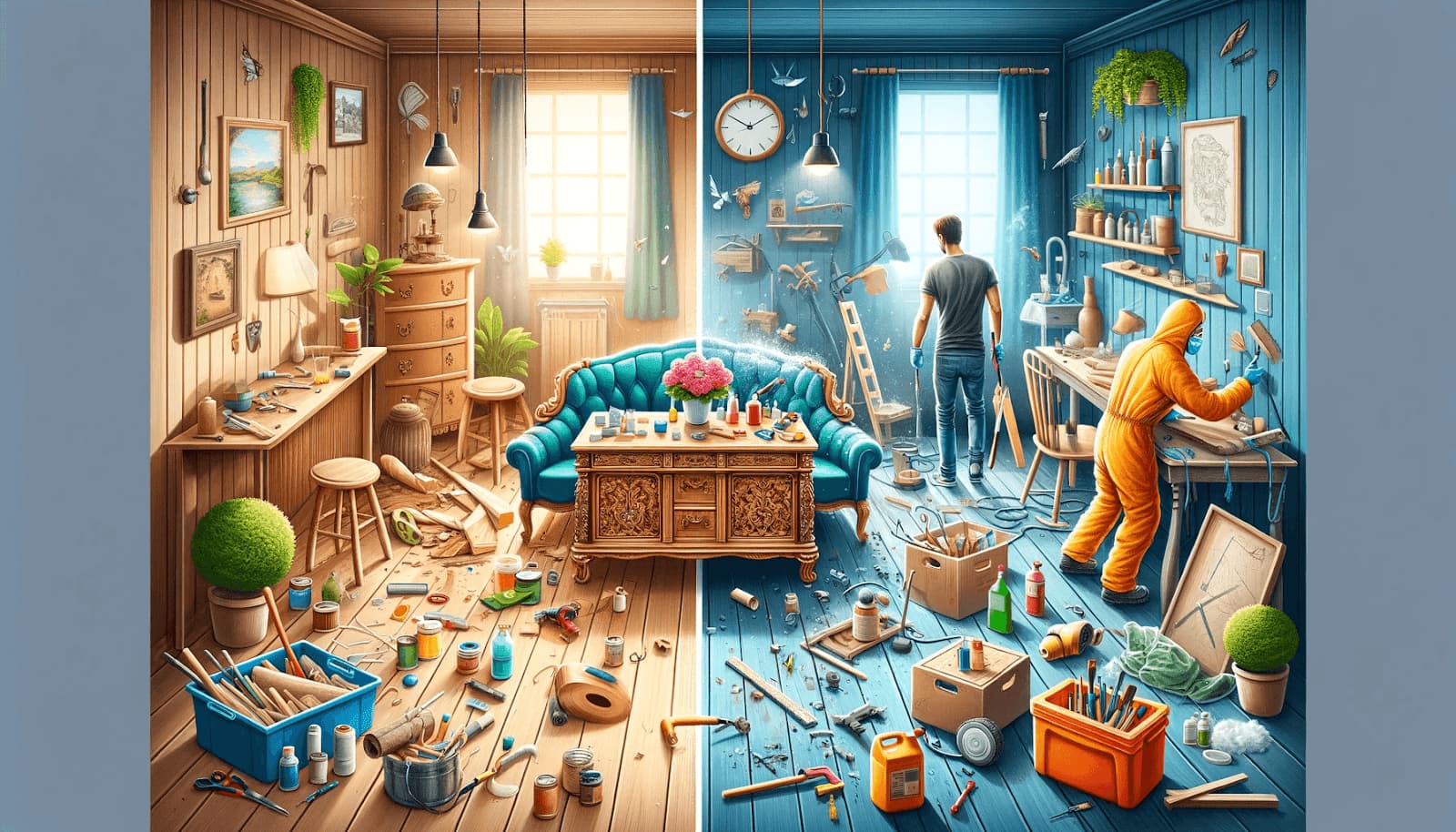Furniture restoration encompasses reviving old or damaged furniture to its former glory or repurposing it for a new use. This practice has gained popularity among DIY enthusiasts, collectors, and those looking to preserve antique and sentimental pieces. While the appeal of restoring a piece of furniture can be strong, it’s essential to weigh the pros and cons before embarking on a restoration project.
Pros of Furniture Restoration
- Sustainability: Restoring furniture contributes to environmental sustainability by reducing waste. Instead of discarding old pieces into landfills, restoration repurposes and reuses materials, which is a more eco-friendly option.
- Cost-Effectiveness: Often, restoring furniture is more cost-effective than purchasing new, especially when dealing with high-quality wood or antique pieces. Restoration can extend the life of a piece significantly, offering better long-term value.
Aesthetic and Emotional Value
- Preservation of History: Antique and heirloom pieces carry historical significance and stories that are preserved through restoration.
- Customization: Restoration allows for customization in ways that new furniture does not. Individuals can select fabrics, finishes, and colors that match their personal style and home decor.
Cons of Furniture Restoration
- Skill Requirement: Furniture restoration can require a significant amount of skill, especially for antiques or pieces requiring extensive work. For those without the necessary skills, professional restoration can be costly.
- Risk of Devaluing Antiques: Incorrect restoration techniques can decrease the value of antique furniture, especially if historical finishes are removed or replaced.
- Exposure to Chemicals: Restoration work often involves stripping, sanding, and refinishing, which can expose individuals to harmful chemicals and dust.
Comparing the Pros and Cons of Furniture Restoration
| Aspect | Pros | Cons |
| Environmental Impact | Reduces waste by repurposing old furniture. | – |
| Economic | Can be more cost-effective than buying new. | Professional restoration can be expensive. |
| Aesthetic Value | Allows for customization and preservation of history. | Incorrect techniques can ruin the piece’s aesthetic. |
| Skill Requirements | DIY projects can be fulfilling and educational. | Requires a significant amount of skill and knowledge. |
| Health and Safety | – | Exposure to harmful chemicals and dust. |
Conclusion
Furniture restoration offers a range of benefits, from environmental sustainability to the preservation of historical pieces. It allows individuals to customize their furniture to match personal tastes and decor, often at a lower cost than buying new. However, it’s not without its challenges. Restoration requires skill, time, and effort, and there’s always the risk of damaging a piece or reducing its value through incorrect restoration methods. Additionally, the process can expose individuals to harmful chemicals and dust.
Before embarking on a furniture restoration project, carefully consider the pros and cons. Assess the value of the piece, both monetarily and sentimentally, and realistically evaluate whether you have the skills and resources to complete the project successfully. When done correctly, furniture restoration can be a rewarding endeavor that breathes new life into old pieces, preserves history, and contributes to a more sustainable world.
FAQ
Can restoring a piece of furniture decrease its value?
Yes, especially if it’s an antique. Incorrect restoration techniques, such as stripping away original finishes or replacing parts with non-original materials, can significantly decrease a furniture piece’s value.
Is furniture restoration more sustainable than buying new?
Generally, yes. Restoration reuses existing materials, which reduces waste and the demand for new resources. It’s a more environmentally friendly option compared to buying new furniture that requires new materials and energy for production and transport.
How do I know if a piece of furniture is worth restoring?
Consider the piece’s sentimental value, the cost of restoration versus buying new, and whether the restored piece will suit your needs and aesthetic preferences. For antiques, consulting with a professional can help determine the piece’s value and whether restoration is advisable.

